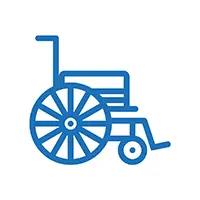Published 30 September 2019
Having a hobby is great for your mental health.
Research shows hobbies can reduce stress, improve feelings of wellbeing, and enhance social connections.
But if you don’t have a hobby, it can be hard to figure out what you could do. There are so many options out there, so where do you start?
Here are some tips about how to find a new hobby you’ll enjoy.
1. Find some inspiration
First, take some time to think about what you’ve enjoyed in the past. Go back to your childhood. Children tend to only do things they want to do with their free time, so if you voluntarily did a certain activity, it was probably something you loved doing. What were you drawn to? What did you spend your time doing? Were you into physical activities, like sports or dancing? Did you like making things with your hands? Were you musical?
Then, talk to your friends and whānau about what they enjoy doing. Ask them about how they got into their hobby, and what they like about it. You may not want to do the same activities as them, but it might spark an idea.
Visiting craft and hobby stores can be a great way to get inspired. Visit some stores and look around. See what catches your attention. If you find yourself stopping to look at something with curiosity, you might like to explore that further.
Another great place to find inspiration is to see what clubs and societies operate in your area. See if any of them jump out at you, and then go along and give it a go. There may also be community education programmes for an activity you are interested in.
Don’t forget to ask your nearest Information Centre for advice. Talk to them about what you’re interested in, and they might be able to point you in the right direction.
2. What’s your budget?
Most leisure activities come with some sort of price tag, so think about what would be realistic for you. But don’t let this hold you back from taking the plunge. Let’s take photography, for example. This is a wonderful, creative hobby that many people hold over a lifetime, but it can be expensive. You can spend many thousands of dollars buying the fanciest cameras and lenses, but you can also take incredible photos with a smartphone. Focus on what you love doing first, and then figure out what you can afford.
If there’s a hobby you’d love to get into but you’re not sure how to pay for it, funding options are available. Contact your local support services provider for help with this.
Go to Apply for disability grants and scholarships
3. Find a way to learn
Once you’ve thought of something you’d like to try, you’ll need to know how to do it! No matter what the hobby is, there are many ways you can learn it, but you need to find the right method for you.
The first place to look is local clubs and societies. Learning with other people is a great way of immersing yourself in a new activity and make wonderful social connections along the way. Clubs are full of passionate people who are dedicated about their crafts or pursuits. Connecting with them will make you more enthusiastic and provide you with the skills to really enjoy your new hobby.
If you can’t find a club or a group to teach you, try social media. Facebook is full of groups of people with similar interests. See if there’s a group in your area for your hobby. Then ask them for suggestions about how to pursue that where you live.
Books are another great way to learn about a new hobby. Your local library will have many books about all kinds of activities. This may be enough to get you started.
If your hobby requires specific practical skills, and you can’t access any people locally to teach you, try YouTube. The website is full of tutorials about how to do almost anything.
4. Give a few things a go
You don’t have to commit to just one thing straight away – try a few! Whatever category your activity is in, find a way to try it out for a short time. Most clubs and societies will allow you to give their activity a go on a trial basis.
If your activity requires materials, such as knitting, see if you can borrow from someone before committing to buying anything. Sometimes we think we’ll enjoy a hobby so we go ahead and buy what we need, but it turns out it’s not right for us, and then we’re stuck with stuff we don’t need. See if you can try it with someone else’s equipment first. For example, if you want to try knitting, find someone who has some spare needles and wool you can use. Or if photography takes your fancy, use your phone to learn the basics before buying a camera. That will give you an idea of whether you really enjoy the process of taking photos before making a financial commitment.
5. Set some goals
After you’ve thought about what sort of activities you’re drawn to, think about what you’d like to achieve.
If you enjoy physical activities, set yourself a challenge, like completing a half marathon, or competing in a tournament. Whatever the activity you’re interested in, find a way to push yourself towards achieving something that seems really difficult right now. You’ll feel amazing after you complete it.
Perhaps you’re more drawn to creative pursuits. If so, come up with a project. What can you make? If you want to knit, you could set yourself a goal of finishing a blanket within one year. If painting is your thing, commit to putting some of your art up for public display. Want to learn music? Set a goal of writing a certain number of songs within the next three months.
After you’ve come up with a goal, or several goals, write them down! This is very important. If you don’t write them down, it’s much easier to get out of completing them. And when you write them down, share your goals with others. Telling someone else about what you want to achieve keeps you accountable for completing it. You don't have to share it with everyone on Facebook, although this can be a great way to share your journey. Your friends and whānau will love seeing updates about the progress you’re making towards your goals, and that will keep you motivated to keep going.
6. Adapt it to suit your needs
No matter what your impairment is, you can do pretty much any activity you want. Don’t let yourself be held back. If your impairment prevents you from participating in an activity, find a way to adapt it. There are endless examples of how people with impairments participate fully in the same activities as non-disabled people. Here are just a few.
Mouth and foot painting
Artists who don’t have the use of their hands and feet can use their mouths to create works of art. The Mouth and Foot Painting Artists Association is an international organisation that brings people with limb impairments together and helps them develop their skills.
Go to the Mouth and Foot Painting Artists Association (external link)
Martial arts
People in wheelchairs can master a martial art. Sensei John Marrable, who became paraplegic as a child, runs a Goju Ryu Karate club in Dunedin from his wheelchair.
Wheelchair rugby
People with limb impairments play a form of rugby from their wheelchairs. It’s an intense, fast and fun sport involving special wheelchairs designed for collisions.














